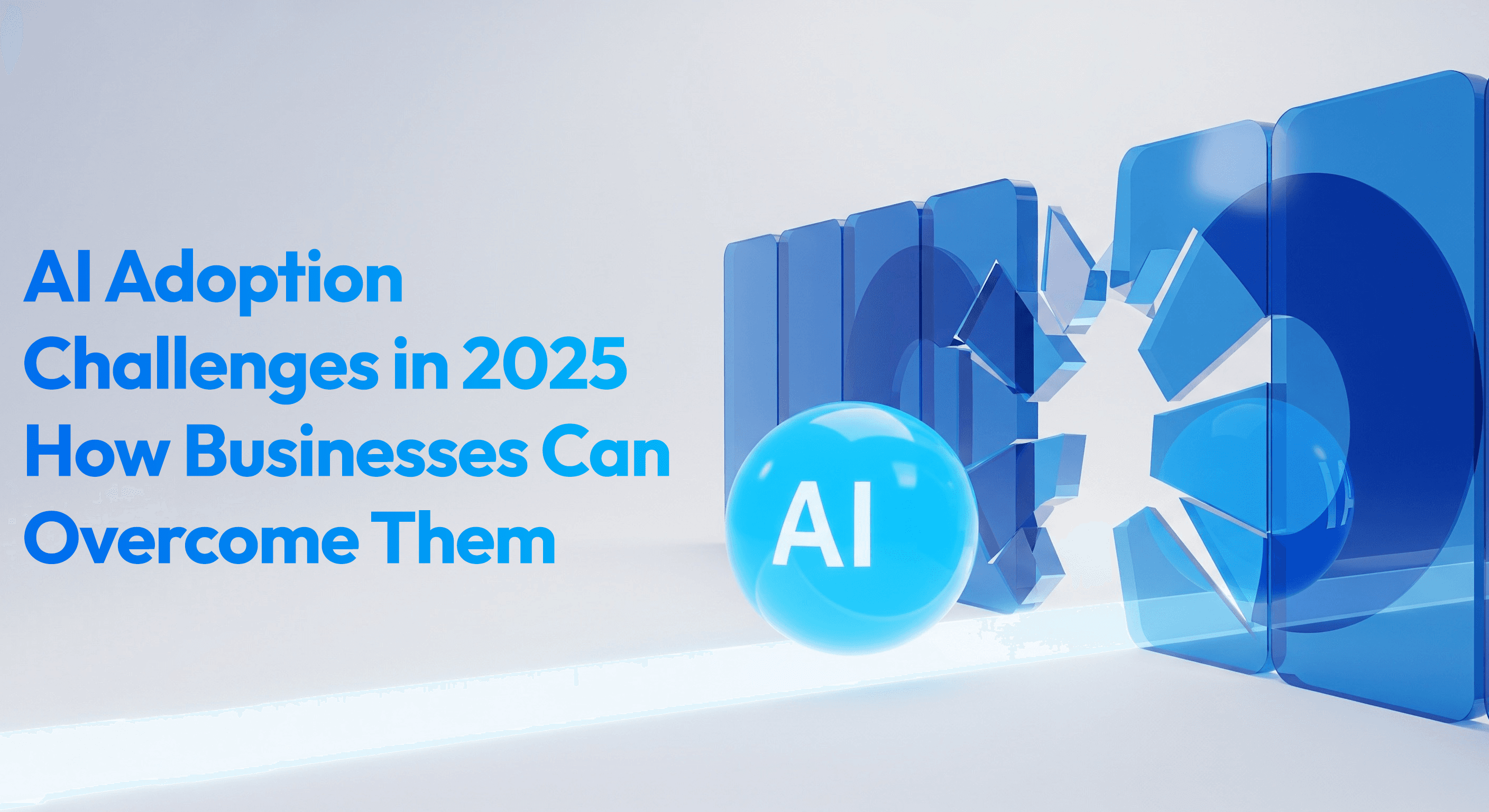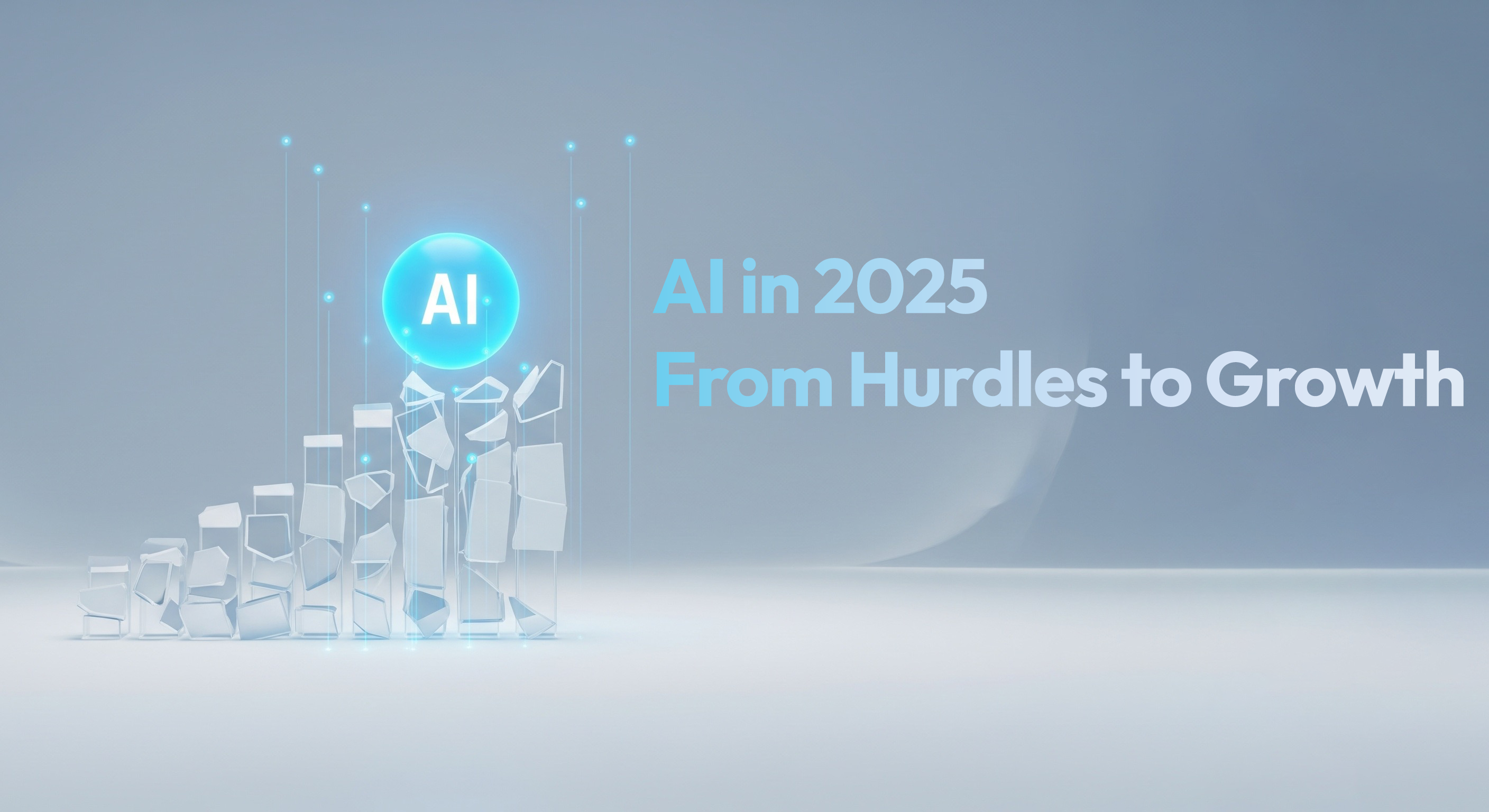AI Adoption Challenges in 2025: Top Barriers and How Businesses Can Overcome Them

AI adoption in 2025 is no longer optional, it is a business necessity. From automating daily tasks to creating new customer experiences, companies that embrace AI are gaining a strong edge. Yet, leaders often face serious hurdles. Proving ROI, integrating AI with legacy systems, and overcoming employee resistance remain the biggest adoption challenges. The organizations that solve these problems quickly will not only scale AI faster but also capture lasting competitive advantage.
The Three Biggest AI Adoption Challenges in 2025
While there are many obstacles, three stand out as the most urgent for businesses in 2025:
Proving ROI and building a business case
Integrating AI into legacy systems
Overcoming employee resistance and building trust
Other challenges such as data quality, bias, and cybersecurity are important but better understood. The three above are the ones most leaders need to prioritize now.
1. Proving ROI and Building a Business Case
Many AI initiatives fail because organizations cannot demonstrate measurable value, leaving leaders without clear, quantifiable outcomes to justify further investment. The main challenges include difficulty linking AI projects to financial or operational impact and unclear metrics for measuring efficiency, cost reduction, or revenue growth. To overcome these issues, businesses should start with small, well-defined pilots that have measurable objectives, establish key performance indicators (KPIs) early, and track results within a fixed timeframe, such as 60 to 90 days. Presenting these outcomes in financial terms creates a data-driven case for AI, guiding investment decisions and building confidence in adoption.
2. Integrating AI into Legacy Systems
Integrating AI with existing infrastructure is often a major bottleneck because many companies rely on outdated ERP, CRM, or data storage systems that are incompatible with modern AI platforms. Fragmented or siloed data can prevent AI from functioning effectively, and full system replacement is usually costly and disruptive. To address these challenges, organizations should conduct a thorough system audit to map data sources and dependencies, use APIs and middleware to connect AI tools with legacy systems, and adopt cloud-based platforms to improve scalability and integration. Implementing phased rollouts, starting with non-critical systems, allows AI to be introduced gradually, minimizing operational risk while creating a scalable technical foundation that supports broader adoption.
3. Overcoming Employee Resistance and Building Trust
The success of AI initiatives largely depends on people, as resistance often arises when employees fear job loss, distrust AI outputs, or lack understanding of its purpose. Common challenges include the misperception of AI as a replacement rather than a supportive tool, and low adoption due to limited skills or awareness. To overcome these issues, organizations should communicate clearly about AI’s role as an enabler, involve employees early in the design and implementation process to foster ownership, and provide training and upskilling programs to improve AI literacy. Continuously monitoring adoption and adjusting communication strategies based on feedback helps build a culture of acceptance and collaboration, ensuring that AI tools are effectively utilized and deliver their intended value.
Safeguards to Support AI Adoption
Beyond the top three, companies must also address
Data Quality and Bias
Data quality and fairness are fundamental to reliable AI outcomes. Organizations should implement strong governance, conduct regular audits, and monitor AI models for bias to ensure results are accurate, consistent, and trustworthy.
Privacy and Compliance
Protecting sensitive data is crucial for responsible AI adoption. Applying techniques such as anonymization, encryption, and federated learning helps safeguard information while maintaining AI performance, and ensures compliance with regulations like GDPR and CCPA.Cybersecurity Risks
AI systems introduce new security considerations that must be managed proactively. Integrating robust security measures, continuous monitoring, and access controls at every stage of deployment ensures AI initiatives remain safe and scalable.
These safeguards are foundational; without them, scaling AI responsibly is impossible.

The 2025 AI Adoption Playbook
For leaders ready to act, here’s a practical playbook:
1. Pick One High-Impact Use Case
Start by selecting a single AI use case that can deliver measurable value quickly. Running a focused pilot with clearly defined objectives and metrics over a fixed period, typically 60–90 days, allows organizations to test assumptions, measure outcomes, and build a strong business case for broader adoption. Starting small reduces risk while demonstrating tangible results that leadership can trust.
2. Build Integration Layers
Ensure that AI tools can work seamlessly with existing systems by creating integration layers. Using APIs, middleware, and cloud-based platforms enables AI to connect with legacy infrastructure without disrupting operations. This approach allows organizations to scale AI adoption gradually while avoiding costly system overhauls or downtime.
3. Win Employee Trust
Employee engagement is critical to AI success. Communicate AI’s role as an enabler, involve staff early in planning and implementation, and provide training to build the skills needed for effective adoption. A culture of transparency and collaboration reduces resistance and encourages employees to use AI tools consistently, maximizing their impact.
4. Strengthen Data Governance
Treat data as a strategic asset by implementing strict governance policies, conducting regular audits, and monitoring AI models for accuracy and fairness. Effective data governance ensures reliable outcomes, prevents bias, and builds confidence in AI-driven decisions, supporting long-term adoption and compliance.
5. Embed Cybersecurity from Day One
Integrate security into every stage of AI adoption. Continuous monitoring, access controls, and regular risk assessments should be part of the organization’s broader IT risk framework. Proactively addressing cybersecurity ensures that AI adoption does not introduce vulnerabilities and protects sensitive information, safeguarding both the business and its stakeholders.
Conclusion
AI adoption challenges in 2025 are real but solvable. Leaders who focus on proving ROI, integrating with legacy systems, and building employee trust will see results faster than those who chase hype. By following a disciplined playbook, organizations can turn AI from an experimental tool into a core business capability. The future belongs to companies that treat AI adoption as strategy, not just technology.
